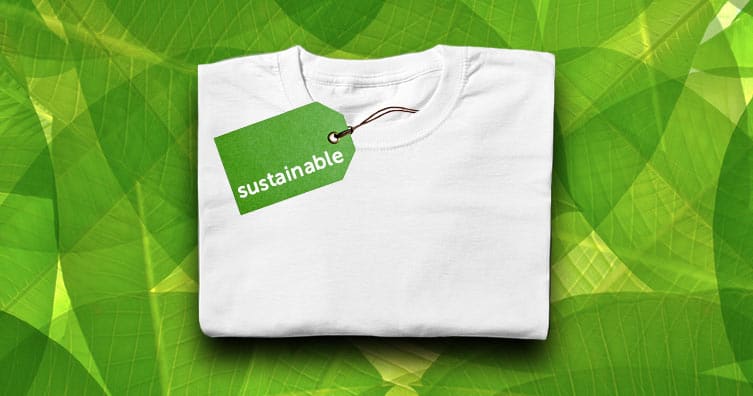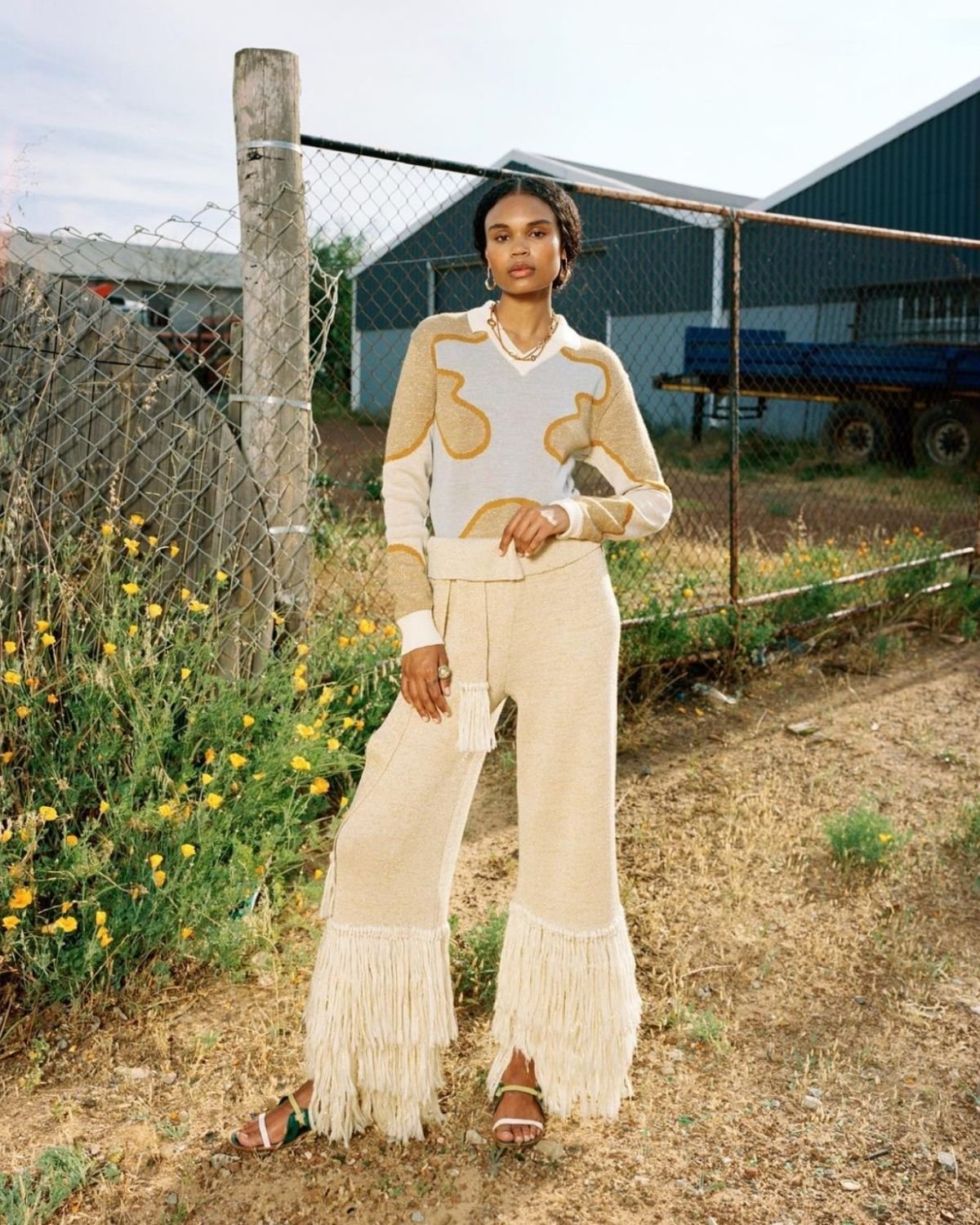Checking out the Rise of Cape Town Sustainable Fashion Brands
Checking out the Rise of Cape Town Sustainable Fashion Brands
Blog Article
Remain Ahead of the Curve by Checking Out Ingenious Style Patterns
In a sector as dynamic as style, remaining in advance involves greater than just complying with existing fads-- it requires an exploration of innovation. Smart textiles, for example, are changing garments into useful work of arts, while 3D printing is reinventing style processes with its personalized, waste-reducing abilities. As sustainability becomes a keystone, advancements like environmentally friendly materials and round fashion techniques are improving environmental responsibility - Cape Town Sustainable Fashion. Furthermore, the convergence of modern technology and style proclaims a new age of customer involvement. Just how, then, can these arising fads redefine the future of fashion, and what ramifications do they hold for brand names looking for to prosper in this evolving landscape?

Embracing Smart Textiles
In recent years, the apparel industry has actually experienced a transformative shift with the integration of smart textiles, an innovative innovation that mixes modern technology with fabric. This evolution stands for not just a blend of aesthetics and capability however likewise a significant jump towards sustainability and personalization in style. Smart fabrics, also called e-textiles, installed advanced electronic devices such as sensors and conductive threads within the textile, making it possible for garments to connect with the wearer or the environment.
These textiles are created to check physiological parameters, such as heart rate or body temperature, supplying real-time wellness analytics. Past wellness applications, wise fabrics are also being used for flexible clothing, which can transform shade or pattern in feedback to ecological stimuli, thus providing a vibrant fashion experience.
Furthermore, the advancement of energy-harvesting fabrics that generate power from activity or sunshine is paving the means for self-dependent wearable modern technology. This advancement is attracting ecologically aware customers and designers intending to minimize the ecological impact of fashion. As research and growth in this area breakthrough, wise textiles are expected to become increasingly widespread, improving the landscape of modern style with their multifunctional abilities.
The Rise of 3D Printing
Changing the production landscape, 3D printing has actually become a game-changer in the fashion business. This innovative technology has enabled designers to push the borders of creative thinking, generating elaborate and personalized garments that were previously inconceivable. By leveraging electronic design and additive production, 3D printing promotes the development of complex geometries and patterns, allowing designers to experiment with brand-new structures and structures.
A noteworthy benefit of 3D printing in vogue is its capacity to create on-demand, reducing waste and minimizing inventory needs. This effectiveness not only optimizes production procedures but additionally permits for fast prototyping, making it possible for developers to bring their visions to life in a shorter timeframe. Moreover, 3D printing supports customization to a level unequaled by traditional techniques, offering distinct layouts and tailored fits tailored to individual consumer preferences.
The rise of 3D printing has likewise equalized fashion, making it accessible to emerging developers who can now produce top notch pieces without considerable economic investment in standard production infrastructure. As modern technology remains to advance, the apparel industry is poised to harness the complete capacity of 3D printing, checking out new materials and strategies that will undoubtedly redefine exactly how fashion is developed and produced.
Lasting Fashion Innovations
As the apparel industry comes to grips with the pressing demand for ecological obligation, lasting fashion technologies have emerged at the center of transformative adjustment. The expanding understanding of eco-friendly influence has actually sustained a change in the direction of more eco-conscious practices and products. Designers and brands are now prioritizing sustainability, including methods that reduce waste and lower carbon footprints.
One substantial development is the increase of circular style, which stresses recycling why not try here and upcycling to extend the lifecycle of garments. This method not only lowers waste but additionally urges customers to embrace a more conscious approach to clothing consumption. Furthermore, making use of sustainable materials, such as natural cotton, hemp, and recycled polyester, has actually gained grip. These materials call for much less water and power during production, considerably decreasing environmental effect.
One more innovation hinges on the adoption of innovative dyeing methods that make use of waterless procedures or all-natural dyes, thus minimizing the huge quantities of water and chemicals typically utilized in textile dyeing. In addition, improvements in biotechnology have actually caused the development of lab-grown natural leather and fabrics, supplying cruelty-free and eco pleasant options to standard materials. Through these introducing efforts, the fashion market is making meaningful strides towards a more lasting future.

Tech-Integrated Garments
Tech-integrated garments represents a groundbreaking combination of fashion and technology, reshaping exactly how people engage with their apparel. This ingenious domain is noted by the addition of smart fabrics and ingrained digital parts, boosting both capability and aesthetic charm. From health and fitness trackers installed in sportswear to warmed jackets managed by means of smart device applications, tech-integrated clothing uses customers unmatched comfort and adaptability.
Introducing brands are driving i was reading this this trend, concentrating on producing garments that react to environmental stimuli or individual commands. As an example, some garments can change shade or pattern in feedback to temperature shifts, while others incorporate biometric sensing units to keep an eye on wellness metrics like heart price or tension levels. The seamless integration of technology into textiles likewise includes environmental sustainability, with efforts to develop self-cleaning materials or garments that get used to weather conditions, therefore reducing the need for numerous layers.
In addition, the development of wearable technology is not simply limited to clothing however encompasses accessories like watches and eyewear, more widening the range of tech-integrated style. As the industry remains to introduce, the capacity for customization and personalization in garments expands, offering customers distinct, tech-enhanced fashion experiences that accommodate their private demands and preferences.
Future of Virtual Style
Over the last few years, the future of digital fashion has actually become a transformative force within the sector, leveraging innovations in electronic modern technology to redefine exactly how style is produced, experienced, and consumed. By integrating enhanced fact (AR), online reality (VIRTUAL REALITY), and 3D style tools, developers can now craft immersive and interactive experiences that transcend typical style boundaries. Online fashion permits the creation of garments that exist entirely in digital settings, offering unlimited opportunities for innovation without the limitations of physical production.
This digital change not just presents possibilities for innovative expression however also addresses sustainability worries fundamental in traditional fashion methods. Cape Town Sustainable Fashion. By getting rid of the need for physical sources, virtual fashion lowers waste and decreases carbon footprints. Furthermore, the surge of online fashion aligns with the enhancing customer need for distinct wikipedia reference and tailored experiences, as virtual garments can be tailored and customized to specific preferences with simplicity

Final Thought
The apparel industry's future lies in the integration of ingenious modern technologies and sustainable techniques - Cape Town Sustainable Fashion. Smart textiles and tech-integrated apparel are boosting capability, while 3D printing supplies opportunities for modification and waste reduction. Lasting style, with green products and circular techniques, demonstrates a dedication to ecological stewardship. In addition, online fashion is poised to redefine customer communications. Adapting to these patterns is crucial for brand names seeking to continue to be appropriate and competitive in this swiftly developing landscape.
In recent years, the style sector has seen a transformative change with the integration of clever textiles, an innovative technology that mixes technology with fabric.As the fashion sector grapples with the pushing requirement for ecological duty, sustainable fashion developments have emerged at the forefront of transformative adjustment.In recent years, the future of virtual style has actually emerged as a transformative pressure within the sector, leveraging innovations in digital modern technology to redefine how style is created, experienced, and eaten. The rise of virtual style aligns with the increasing consumer demand for personalized and special experiences, as online garments can be personalized and customized to specific preferences with ease.
The style market's future lies in the integration of cutting-edge technologies and sustainable practices.
Report this page